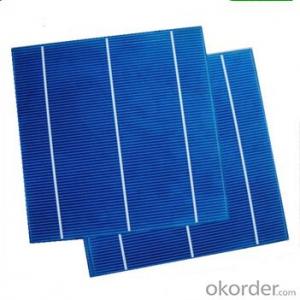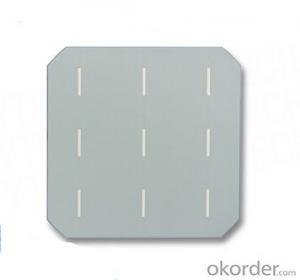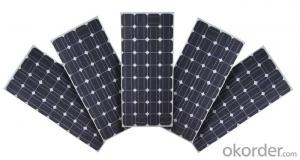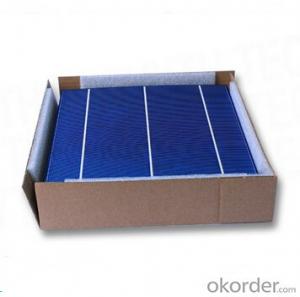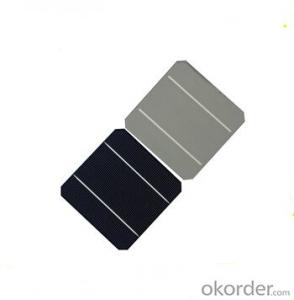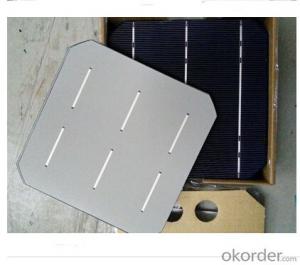Pretabbed Solar Cells
Pretabbed Solar Cells Related Searches
Except For Solar Cells Weegy Problems With Solar Cells High Power Solar Cells Light Trapping In Solar Cells High Performance Solar Cells High Output Solar Cells High Wattage Solar Cells Energy Transfer In Solar Cells High Efficiency Hvac Systems Recombination In Solar CellsHot Searches
Cheap Solar Cells For Sale Flexible Solar Cells For Sale Q Cells Solar Panels For Sale Printed Solar Cells For Sale Bulk Solar Cells For Sale 6x6 Solar Cells For Sale Broken Solar Cells For Sale Cpv Solar Cells For Sale Photoelectric Cells For Sale Price Of Silicon Solar Cells Price Of Solar Cells Over Time Buy Solar Cells From China Cheap Solar Cells China Best Type Of Solar Cells Flexible Solar Cells Price Q Cells Solar Panels Price 3 Types Of Solar Cells Production Of Solar Cells Common Types Of Solar Cells Q Cells Solar Panel PricesPretabbed Solar Cells Supplier & Manufacturer from China
Okorder.com is a professional Pretabbed Solar Cells supplier & manufacturer, offers integrated one-stop services including real-time quoting and online cargo tracking. We are funded by CNBM Group, a Fortune 500 enterprise and the largest Pretabbed Solar Cells firm in China.Hot Products
FAQ
- Yes, solar cells can be used for powering space missions. Solar cells, also known as photovoltaic cells, convert sunlight into electricity. They have been widely used in space missions as they provide a reliable and renewable source of energy. Solar panels equipped with these cells are often deployed on spacecraft to generate power for various systems and instruments. The abundance of sunlight in space makes solar cells a practical and efficient option for powering space missions.
- Yes, solar cells can be recycled. They are made up of various materials such as silicon, glass, and metals, which can be separated and reused. Recycling solar cells helps in reducing waste and the environmental impact of discarded panels.
- Solar cells contribute to reducing carbon emissions by converting sunlight directly into electricity without producing any greenhouse gases. This renewable energy source allows us to generate clean electricity, replacing the need for fossil fuel-based power generation that emits significant amounts of carbon dioxide and other pollutants. By adopting solar cells, we can reduce our dependence on fossil fuels and mitigate the harmful effects of carbon emissions on the environment and climate change.
- Solar cells generate electricity through the photovoltaic effect, where the cells convert sunlight directly into electrical energy. The cells are made of semiconducting materials, usually silicon, which absorb photons from the sunlight. These photons excite the electrons in the material, causing them to break free from their atoms and create an electric current. This current is then collected and used to power various devices or stored in batteries for later use.
- Yes, solar cells can be used in remote areas with no access to electricity. Solar cells convert sunlight into electricity, making them a reliable and sustainable source of power in areas where grid connectivity is absent. They are particularly well-suited for remote locations due to their portability, low maintenance requirements, and ability to generate electricity even in harsh environmental conditions.
- Solar cells play a crucial role in powering outdoor lighting by harnessing sunlight and converting it into electrical energy. These cells, often placed on top of the lighting fixtures, absorb sunlight during the day and store it in rechargeable batteries. As the sun sets, the stored energy is then used to power the outdoor lights, ensuring they illuminate without the need for electricity from the grid. This not only reduces reliance on traditional energy sources but also provides a sustainable and cost-effective solution for lighting outdoor areas.
- Yes, solar cells can be used to power security systems. Solar panels can convert sunlight into electricity, which can then be used to power security cameras, sensors, and other devices in a security system. This eliminates the need for traditional power sources and reduces reliance on the electrical grid, making solar-powered security systems more flexible and cost-effective.
- Yes, solar cells can be used in public transportation. They can be integrated into various parts of vehicles, such as the roof or windows, to generate electricity and reduce the reliance on fossil fuels. This not only helps to reduce emissions and combat climate change but also provides a sustainable and cost-effective solution for powering public transportation.



















